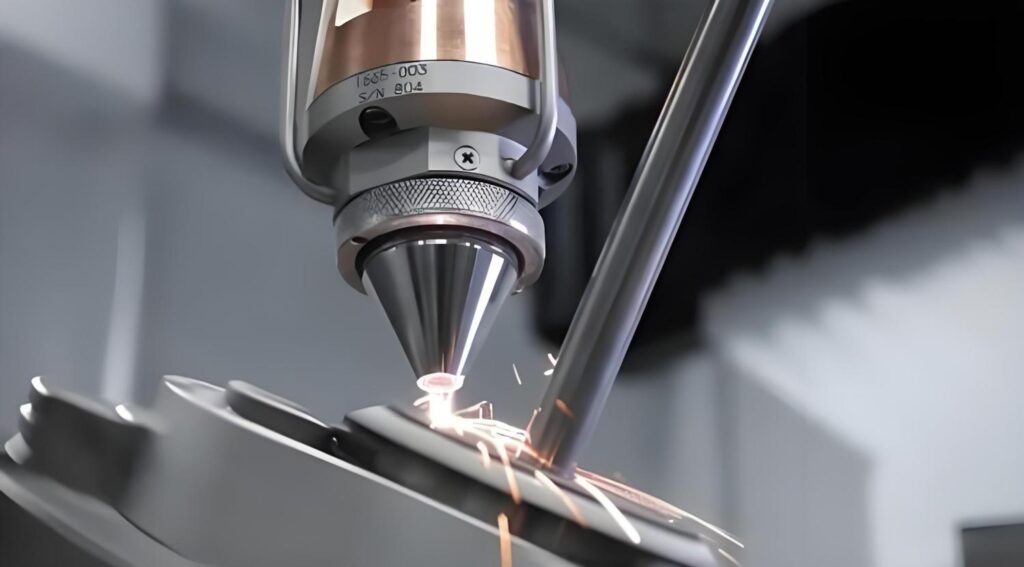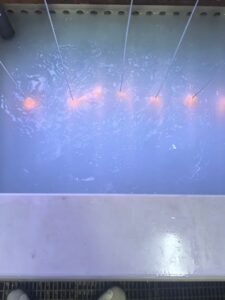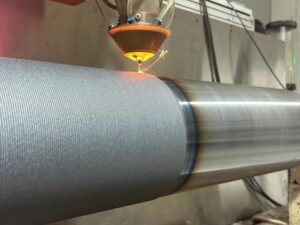What Is Aluminum Welding?
Aluminum welding refers to the process of joining aluminum pieces together using various welding techniques. Unlike other metals, aluminum presents unique properties that require specialized skills and tools to weld properly. As a lightweight, corrosion-resistant, and high-strength metal, aluminum is widely used in industries such as aerospace, automotive, construction, and manufacturing.
Understanding the fundamentals of aluminum welding is essential for ensuring quality workmanship and structural integrity in projects involving this metal. Whether someone is a seasoned welder or just beginning their journey, knowing how aluminum behaves under heat and what processes are most effective is the first step in mastering aluminum welding.
Types of Welding Used for Aluminum
Several welding methods are suitable for aluminum, each with its advantages and considerations. Below are the most common techniques used to answer the question, “Can you weld aluminum?”
- Tungsten Inert Gas (TIG) Welding
TIG welding, or gas tungsten arc welding (GTAW), is the most popular method for aluminum. It uses a non-consumable tungsten electrode and an inert gas, typically argon, to shield the weld area. TIG welding offers precise control, making it ideal for thin aluminum sheets and intricate projects. It produces clean, high-quality welds but requires significant skill and time.
- Metal Inert Gas (MIG) Welding
MIG welding, or gas metal arc welding (GMAW), uses a consumable aluminum wire electrode fed through a welding gun. It’s faster than TIG welding and suitable for thicker aluminum pieces. MIG welding is commonly used in industrial settings, such as automotive manufacturing, but may produce less aesthetically pleasing welds compared to TIG.
- Friction Stir Welding (FSW)
Friction stir welding is a solid-state welding process that uses a rotating tool to generate friction and heat, joining aluminum without melting it. FSW is ideal for high-strength alloys like 7075 and produces strong, defect-free welds. It’s commonly used in aerospace and shipbuilding but requires specialized equipment.
- Plasma Arc Welding (PAW)
Similar to TIG, plasma arc welding uses a concentrated plasma arc for precise, high-quality welds. It’s less common but effective for thin aluminum sheets and applications requiring minimal heat input. PAW is often used in electronics and aerospace industries.
- Resistance Welding
Resistance welding, including spot and seam welding, is used for joining thin aluminum sheets in applications like automotive body panels. It’s fast and cost-effective but limited to specific joint designs and thicknesses.
Inapplicable Used for Aluminum welding
While several welding methods work well for aluminum, some are generally not recommended due to their incompatibility with the metal’s properties or the likelihood of producing poor-quality welds. Below are welding techniques to avoid when working with aluminum.
- Oxy-Acetylene Welding
Oxy-acetylene welding, which uses a flame produced by burning acetylene gas with oxygen, is not suitable for aluminum. The process lacks the precision needed to control aluminum’s high thermal conductivity and low melting point, often leading to burn-through or excessive distortion. Additionally, the flame can introduce contaminants, increasing the risk of porosity and weak welds.
- Stick Welding (SMAW)
Shielded metal arc welding (SMAW), or stick welding, is rarely used for aluminum because it produces inconsistent results. The electrodes used in stick welding are not designed for aluminum’s oxide layer, leading to poor arc stability and contaminated welds. TIG or MIG welding are far better alternatives for aluminum.
- Submerged Arc Welding (SAW)
Submerged arc welding, commonly used for thick steel sections, is impractical for aluminum. The process relies on a flux blanket that can react adversely with aluminum’s oxide layer, causing defects. Additionally, SAW’s high heat input is difficult to control on aluminum, increasing the risk of warping or cracking.
- Gas Welding
Gas welding, similar to oxy-acetylene, uses a flame to melt the base metal and filler. It’s unsuitable for aluminum due to the metal’s sensitivity to heat and the difficulty of maintaining a consistent weld pool. Gas welding also struggles to penetrate the oxide layer effectively, resulting in weak or incomplete welds.
6 Common Aluminum Alloys for Welding
Not all aluminum is created equal. Different aluminum alloys have unique properties that affect their weldability. Below are six common aluminum alloys used in welding, along with their characteristics and applications.
| Alloy | Weldability | Key Characteristics | Common Applications | Recommended Welding Methods |
| 1100 | Easy | Excellent corrosion resistance, high thermal conductivity, low strength | Sheet metal work (roofing, siding) | TIG, MIG |
| 3003 | Good | Stronger than 1100, good corrosion resistance | Cookware, storage tanks, HVAC components | TIG, MIG |
| 5052 | Good | Balanced strength, corrosion resistance, prone to distortion if overheated | Marine (boat hulls), automotive (fuel tanks) | TIG, MIG (with heat control) |
| 6061 | Excellent | Versatile, strong, corrosion-resistant | Structural components (bridges, aircraft parts, bicycle frames) | TIG (preferred), MIG |
| 6063 | Good | Good for extrusions, requires careful heat management | Architectural extrusions (window frames, railings) | TIG, MIG |
| 7075 | Challenging | Exceptionally strong, heat-sensitive, prone to cracking | Aerospace components | Friction stir welding, TIG (specialized) |
The Challenges of Welding Aluminum
While aluminum can be welded, several challenges must be overcome to achieve high-quality results. Understanding these obstacles is crucial for successful welding.
Oxide Layer Issues
Aluminum naturally forms a thin oxide layer that has a higher melting point (around 3,700°F) than the base metal (1,200°F). This layer must be removed before welding, typically using a wire brush or chemical cleaner, to ensure a clean weld pool. Failure to do so can result in inclusions and weak welds.
High Thermal Conductivity
Aluminum conducts heat rapidly, making it difficult to maintain a consistent weld pool. Welders must use high heat input and precise control to avoid burning through thin sections or creating uneven welds. Preheating thicker pieces can help manage heat distribution.
Thermal Expansion and Warping
Aluminum expands and contracts significantly with temperature changes, increasing the risk of warping or cracking during welding. Using proper fixturing and controlling heat input is essential to minimize distortion.
Porosity and Contamination
Aluminum welds are prone to porosity, where gas bubbles become trapped in the weld, weakening it. Contaminants like oil, dirt, or moisture can exacerbate this issue. Thorough cleaning and using high-purity shielding gas are critical to preventing porosity.
Alloy-Specific Challenges
Different aluminum alloys respond differently to welding. For example, high-strength alloys like 7075 are more susceptible to cracking, while softer alloys like 1100 are easier to weld but less durable. Selecting the right filler material and welding technique for the alloy is vital.
Equipment and Skill Requirements
Welding aluminum requires specialized equipment, such as a TIG or MIG welder with adjustable settings, and a skilled operator. Inexperienced welders may struggle with aluminum’s sensitivity to heat and rapid cooling, leading to defects like burn-through or incomplete fusion.
Applications of Aluminum Welding
Aluminum welding is used across various industries due to the metal’s unique properties. In aerospace, welded aluminum components form lightweight, strong aircraft structures. The automotive industry relies on aluminum welding for body panels, frames, and engine components. Marine applications, such as boat hulls and masts, benefit from aluminum’s corrosion resistance. Additionally, aluminum welding is common in construction, electronics, and consumer goods manufacturing.
Real-World Examples
- Aerospace: Welded 6061 aluminum alloys are used in aircraft fuselages and wings due to their strength-to-weight ratio.
- Automotive: MIG-welded 5052 aluminum is used in car body panels for lightweight, fuel-efficient vehicles.
- Marine: TIG-welded 5083 aluminum is ideal for boat hulls, resisting corrosion in harsh marine environments.
- Construction: Welded 6063 aluminum extrusions are used in architectural structures like window frames and railings
Trust the Experts at Precionn
Aluminum welding is undoubtedly a specialized process. From choosing the right alloy and filler material to managing heat input and preparing surfaces, every step plays a critical role in the outcome. For businesses and professionals who rely on precision and reliability, understanding the intricacies of aluminum welding can lead to better results and fewer headaches down the line.
Precionn brings years of experience in precision machining and welding services, delivering top-quality metalwork to international clients. Our team of experts is well-versed in handling various aluminum alloys and employs cutting-edge technology to ensure excellence in every weld. Whether you’re tackling a complex industrial project or need custom aluminum parts, Precionn is your trusted partner in metal fabrication.
For more insights and expert services, visit our website and discover how we can support your business with world-class machining and welding solutions.




